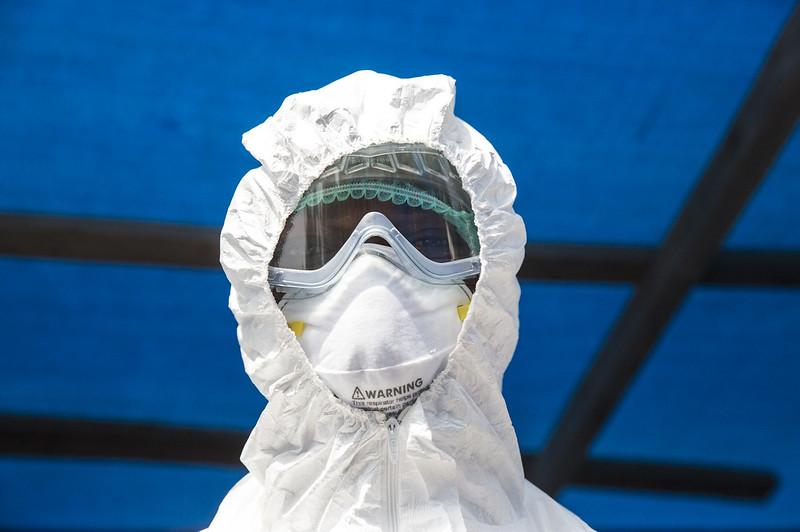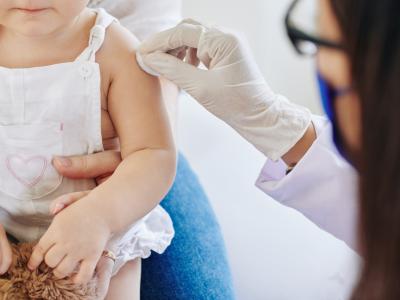Four more Ebola cases were reported in the Democratic Republic of the Congo (DRC) outbreak today, as health officials noted some promising response developments in the Biakato Mine hot spot.
In other developments, researchers yesterday published a modeling framework for examining the role of conflict and violence in outbreak settings, based on clashes and attacks that occurred in the ongoing DRC outbreak.
New cases, plus a high-risk probable case
Along with 4 newly confirmed Ebola infections, 1 more probable case was added to the total, lifting the overall outbreak number to 3,248 cases, 117 of them listed as probable.
In a statement today, the DRC's Ebola technical committee (CMRE) said the four new lab-confirmed cases recorded yesterday are from the current known rural hot spots, with one each from Kalunguta, Mabalako, Mambasa, and Mandima.
The CMRE said the probable case involves a 24-year-old woman who died in the Biakato Mines area of Ituri province on Oct 14. Her symptoms began on Oct 4 and between Sep 28 and Oct 10 she was hospitalized, during which she had a caesarean section on a term pregnancy, experienced bleeding from the incision, but left the facility against medical advice and died en route to Biakato Mines. She did not receive a secure burial.
Investigators apparently confirmed another Ebola infection in another hospital patient on Oct 11, and Ebola infections were confirmed shortly after in the probable case-patient's son and husband.
The CMRE said no new deaths were reported, with the total holding at 2,172.
Response gains traction in Biakato Mines
In a detailed weekly report on the response, the World Health Organization (WHO) said 21 new cases were reported from five health zones in the week spanning Oct 14 to Oct 20, which it said is still substantial, especially in the Biakato Mine area, which makes up 76% of recent cases.
However, it added that deploying more support to Biakato Mines has yielded some improvement in response efforts. For example, it said the proportion of confirmed cases who were listed as contacts rose from 13% to 57%.
"While this is encouraging, there remain notable challenges in accessing and mounting the full range of public health activities in some areas," the WHO said. It also noted that onward transmission has been observed in Kalunguta and Mabalako health zones, underscoring the high risk of resurgence.
Conflict study includes first-hand impressions
The authors of a study on civil unrest and Ebola control included a doctor who worked in a Doctors Without Borders (MSF) Ebola treatment center in Katwa and had some harrowing details about the attacks that occurred there earlier this year. The team, led by a group from Yale University, published its findings yesterday in Proceedings of National Academy of Sciences (PNAS).
The report notes that there were two major signs of an impending attack in Katwa treatment center on Feb 24. The first was a change in the public's behavior toward the health team a week before the attack from positive interactions to one where medical workers were verbally harassed while walking to the unit. Also, the number of suspected cases referred to the center dropped sharply, from 35 to 40 suspected cases a week to just 2 on the day of the attack.
"Rumors about foreigners experimenting on locals, taking organs, and filling the bodies with concrete and Ebola being a fabrication were also circulating," the team wrote.
Regarding the attack at the Butembo Ebola treatment center a few days later, the event seemed to be more elaborately planned, with assailants attacking the center's power supply, which led to the deaths of two patients.
For the study, the group looked at how conflict affected the outbreak from Apr 30, 2018, to Jun 23. They sketched out a timeline of the conflict events, conducted an ethnographic appraisal of local conditions that preceded and followed the attacks, and modeled Ebola transmission based on WHO data.
Though vaccination contributed to a decline in incidence, the group's modeling suggests the disruptive events reduced the overall effectiveness of the vaccine by 43%. They also note that declining case incidence was repeatedly reversed by conflict incidents.
They said the model framework they used could be useful for analyzing other diseases and regions.
Controlling outbreaks in conflict zones is already difficult, but when health providers become targets, the task becomes even more daunting, the authors wrote. "Engendering trust among locals early in an outbreak through community engagement is fundamental to ensure that frontline workers providing treatment, conducting contact tracing, and distributing vaccines can work efficiently."
See also:
Oct 22 CMRE daily update
Oct 21 CMRE daily update
Oct 21 WHO Ebola situation report
Oct 21 PNAS abstract


















